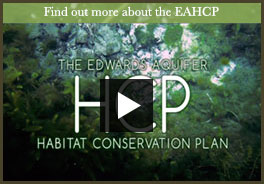Management of Recreation in Key Areas
Recreation plays an integral part in what makes the San Marcos River such an attractive resource. San Marcos is expected to double in population to over 94,000 people by 2030 with the Austin-San Antonio corridor increasing at the same rate. This is expected to lead to increased recreation, especially as the San Marcos River is reaching its capacity. The most prominent recreation feature of the river downstream of Sewell Park is the Noon Day Lion’s Club “Toob” Rental which is housed in the City’s recreation hall in City Park. Tubes are rented for a fee with proceeds gifted back to the community through the Lion’s Club. There are several other small businesses which rented tubes but these are minor contributors to the overall number of rentals.
Parking around the river is limited to City Park and at Rio Vista Park. No new parking is planned.
A major concern regarding Texas wild-rice is recreational activity in high-quality habitat areas of the San Marcos River. Several types of recreation occur traditionally on the San Marcos River, including swimming, snorkeling, scuba, non-motorized boating, tubing, wading, fishing, and recreating with dogs. All these activities impacted Covered Species and their habitat, some to greater degree than others. While exact impacts are unknown, as discharge decreases, a greater percentage of plants are exposed to potential negative consequences. Damage to wild-rice stands by receptionists, particularly dogs, through direct contact was documented by Breslin (1997). Wild-rice is further impacted through fragmentation of other vegetation which then floats downstream eventually collecting on wild-rice stands. Fountain darters are potentially impacted through increased turbidity and accidental contact. While there are hardscaped access points throughout the City parks, numerous desire trails exist and contribute to bank erosion where recreationists enter and exit at whim.
Recreation control is not meant to curtail recreation for large stretches of the river, but simply within key high quality habitat areas for Texas wild-rice to limit unnecessary impacts during low-flow conditions. To minimize the impacts from recreation, the City of San Marcos will establish permanent river access points. Permanent access will be located at Dog Beach, Lion’s Club Tube Rental, Bicentennial Park, Rio Vista Park, the Wildlife Annex, and potentially other areas (as determined through the Adaptive Management Process). Areas between access points will be densely planted with vegetation that discourages streamside access.
Additionally, TPWD intends to create State Scientific Areas by limiting recreation in these specified areas during low flow conditions. With the exception of the eastern spillway immediately below Spring Lake dam, none of the protected areas would extend across the entire river channel in order to allow longitudinal connectivity for reasonable recreation throughout the river. The City of San Marcos will install kiosks showing access points, exclusion zones, and associated educational components at key locations.
